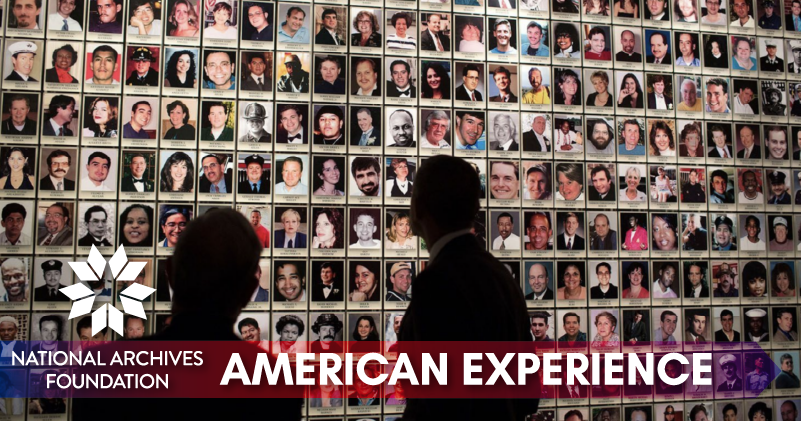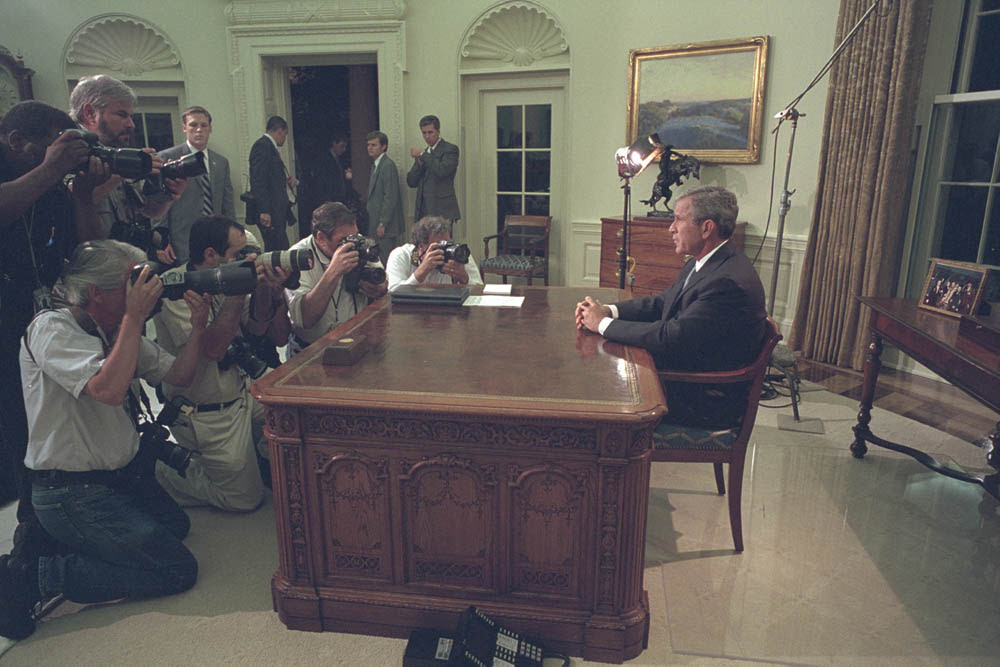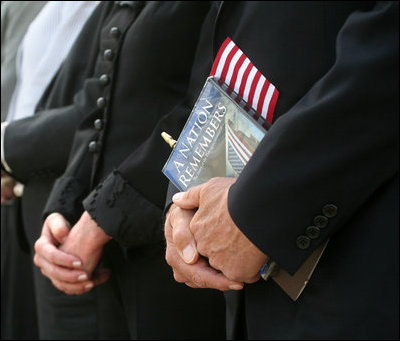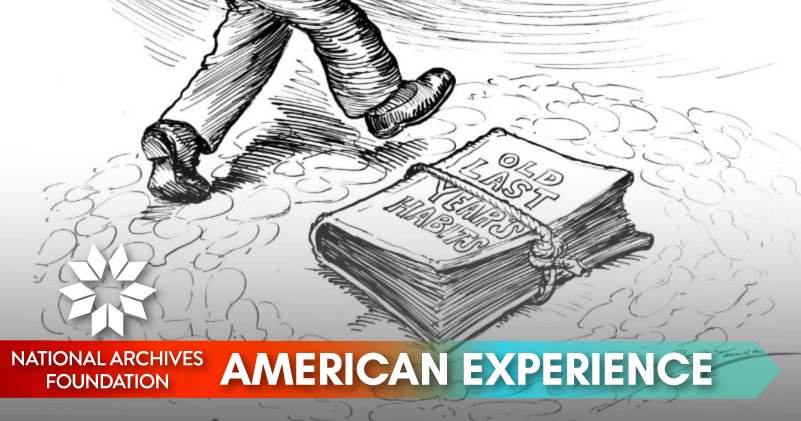We Remember

This week the National Archives Foundation honors those individuals and families impacted by the 9/11 tragedy, as well as the nation. While time has passed since the attacks, the event left an indelible mark on our government and a legacy that the public still grapples with today. There are two programs, in addition to online displays of 9/11 records, I hope you will join us for:
How Remember: September 11 Memorials
Tomorrow, September 8 at 5:00 P.M., the architects of all three 9/11 memorials discuss the design process, community inputs, and decisions to capture the moment and stories of each site.
A Life of Selfless Service, Sacrifice, and Civic Engagement
The term hero was redefined on 9/11. Now, we include the countless first responders who went beyond any job description, as well as a range of ‘average people’ who just went to work that day but ended up demonstrating extraordinary courage and taking actions to help coworkers and strangers in the face of enormous adversity. This Friday evening, September 10 at 6:30 P.M., the National Archives will celebrate the story of one such individual who was an immigrant and war hero. While he perished in the attacks, he is credited with saving the lives of more than 2000 that day.
We are grateful for the generous support of Maggie and Robert Boroujerdi who helped make these programs and the Featured Document Display commemorating the 20th Anniversary of 9/11 possible.
The images, reactions, and speeches of that day and the weeks that followed are etched in the nation’s memory and in the records of the Archives. Please join us this week as we reflect and remember this historic moment.

Patrick Madden
Executive Director
National Archives Foundation
Acts of Heroism

When United Flight 93 took off from Newark International Airport in New Jersey, bound for San Francisco on that clear September morning, most of the passengers had no idea that their actions that day would thwart a terrorist attack. The aircraft lifted off the tarmac at about a quarter to 9 o’clock. Approximately forty-five minutes into the flight, four hijackers stormed the cockpit and took control of the aircraft. They turned off the transponder that keeps an aircraft in contact with air traffic controllers. Then they turned the plane around and headed for Washington, D.C.
National Archives Identifier: 7597340
National Archives Identifier: 7597342
Besides the hijackers, there were thirty-seven passengers and seven crew members on board, and many of them immediately started phoning their loved ones. They quickly learned that two other airplanes had been flown into the World Trade Center towers in New York, and a third aircraft had hit the Pentagon. They surmised that the hijackers intended to use United Flight 93 as an airborne missile to destroy a fourth target.
Several of the passengers and crew members then charged the cockpit, armed with boiling water, service carts, and whatever makeshift weapons they could lay their hands on. The hijackers maneuvered the plane wildly from side to side and up and down to dissuade them, but the passengers and crew continued their assault on their captors. At 10:03 a.m., the hijackers crashed the airplane into a strip coal mine near Shanksville, Pennsylvania, which was about twenty minutes away from Washington, D.C., by air. When he learned that the plane had crashed, Vice President Dick Cheney, who was in the White House bunker and who had authorized the military to shoot Flight 93 down, said, “I think an act of heroism just took place on that plane.”
National Archives Identifier: 7597220
The National Archives is the repository of the transcripts of the conversations of the air traffic controllers who were managing the flight that day. The transcripts document the flight from take-off through the moment when the hijackers quit communicating with the air traffic controllers in Cleveland, Ohio, to the time when people on the ground in Pennsylvania started reporting seeing clouds of black smoke billowing from the crash site.
National Archives Identifier: 7597341
The actions of the passengers and crew of United Flight 93 have been lauded and memorialized countless times since the event took place. The 9/11 Commission Report on the attacks describes in chilling detail the events on that airplane.
American Resolve

in NARA’s Prologue Magazine
At 8:30 p.m. on September 11, 2001, President George W. Bush spoke to the nation from the Oval Office about the events of the day. The President had begun the day in Florida, where he was speaking to a group of elementary school students when White House Chief of Staff Andrew Card whispered a heart-stopping message in his ear: “A second plane hit the second tower. America is under attack.”
Despite the protests of members of his Secret Service detail, who did not want him to return to Washington, D.C., Bush insisted that he was going back to the White House that night. Once he arrived, he and his staff began composing a message that he would broadcast to the nation later that night.
George W. Bush’s handling of the 9/11 crisis won him great praise.
“These acts of mass murder were intended to frighten our nation into chaos and retreat. But they have failed. Our country is strong,” he told his audience. “A great people has been moved to defend a great nation. Terrorist attacks can shake the foundations of our biggest buildings, but they cannot touch the foundation of America. These acts shatter steel, but they cannot dent the steel of American resolve. America was targeted for attack because we’re the brightest beacon for freedom and opportunity in the world. And no one will keep that light from shining.”
What Happened

On November 27th, 2002, just one year after the devastation of September 11th, Congress passed Public Law 107, The Intelligence Authorization Act for Fiscal Year 2003. Among other things, this Act established the National Commission on Terrorist Attacks Upon the United States, or the “9/11 Commission,” as it was better known.
The 9/11 Commission, a bi-partisan group created by Congress, worked until August 24, 2004 with the mission of providing a “full and complete accounting” of the events of September 11, 2001, and to make recommendations about how to avoid future terrorist attacks.
There are more than 570 cubic feet of text-records pertaining to 9/11 and the Commission’s work. These documents, some enlightening, some heartbreaking, tell the stories of people’s final moments, acts of heroism, and first-person accounts of those who were on the scene serving on search and rescue teams. The National Archives is the steward of these documents, preserving these findings for years to come. Among the resources and records we keep are a comprehensive list of all individuals interviewed by the 9/11 Commission, audio recordings of many interviews, and Memorandums from the Record, which are the results of the Commission’s fact-finding missions.
The Federal Aviation Administration (FAA) also compiled records relating to the day, a total of 126 cubic feet of textual, audio, and electronic files. You can learn how to search these records (many of which were found in our story about the heroes of Flight 93) at this link.
The National Archives also preserves and manages the 9/11 Commission website, which was frozen on September 20, 2004, just over a month after the Commission completed its work.
History Snacks
Frozen in Time

National Archives Identifier: 6523866
American Airlines Flight 77 took off from Dulles International Airport outside Washington, D.C., but it was hijacked shortly after 8 a.m. by five Al-Qaeda terrorists. At 9:37 a.m., they crashed the airplane into the western side of the Pentagon.
Immediately, military and civilian employees in the building started searching for survivors. Firefighters arrived within minutes and joined the effort. In all, at least 189 individuals, including the flight crew, the passengers on the aircraft, the hijackers, and people who were in the Pentagon died in the attack.
If there was anything “lucky” about the day, it was this: the wing of the Pentagon that was hit was being renovated, and most of the offices in that wing were unoccupied. Only 800 of the 4,500 employees who would normally have been present were there, resulting in far less casualties. The renovations were in response to the Oklahoma City bombings, and the plane struck the only side of the building equipped with sprinkler systems, a web of steel reinforcements, and blast-proof windows.
Still, the fires burned so hot that they melted building materials in the walls and ceilings of the building. Firefighters fought the flames throughout that night.
Old Glory

Source: NARA’s Unwrittern Record blog
Some of the most poignant photographs taken of the 9/11 tragedy are of Old Glory. From Ground Zero in New York City to the smashed western façade of the Pentagon to a strip coal mine in Shanksville, Pennsylvania, to countless memorials across the country for the victims of the attacks, the American flag has represented determination and hope in times of great trouble.






